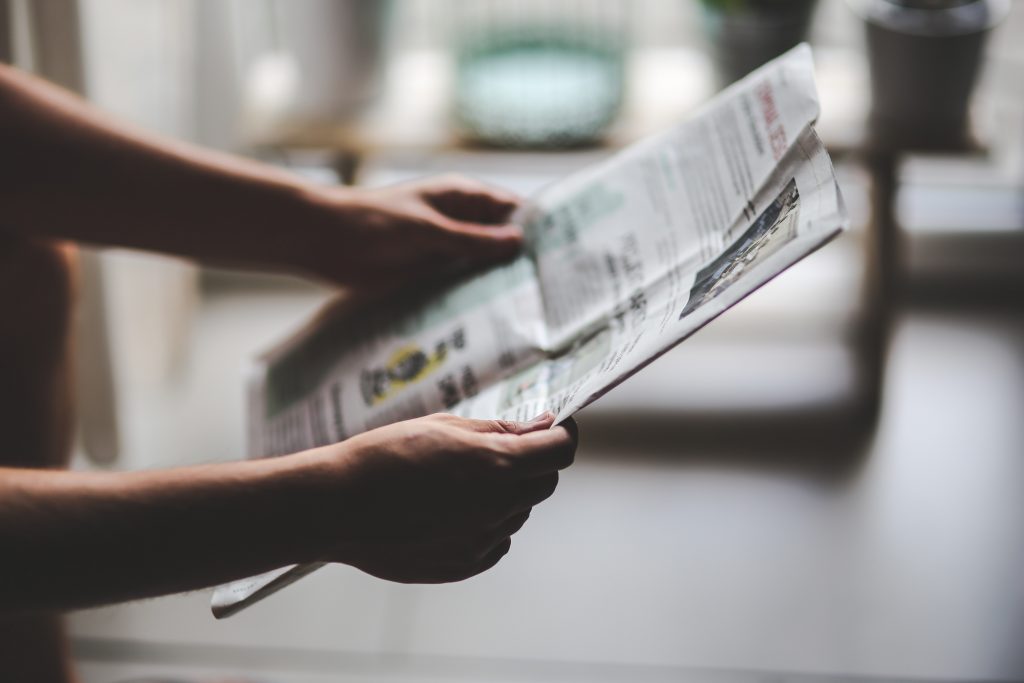Disturbing trends of racism, sexism, and homophobia in our news media are on the rise, with world leaders echoing these harmful sentiments.

The way in which the media report on news has a huge impact on the way we view the cultures of the people that make up our nation. This is often shaped (or manipulated) by the politicians who control them and the language used. You can observe this daily, simply by reading the headlines. News should be impartial, factual, and unbiased.
The ‘Who Watches the Media’ report (2017) found that of 124 race-related opinion pieces published between January and July of 2017 in Australia, 62 were potentially in breach of one or more industry codes of conduct due to racist content. This research echoes the findings of the UN expert panel on racial discrimination which last week reported that racist media debate is on the rise in Australia. The UN recommended that the Australian media “put an end to racist hate speech” in print and online by adopting a “code of good conduct” with provisions to ban racism. The fact that we are having to be recommended of this is appalling in itself.
Plagued by the Isms: Racism is One Issue Among Many in Our News Media
Unfortunately, racism is just one of many problematic sentiments that we face in our news media. Patriarchal, white supremacist, and homophobic tendencies are strong throughout. These sentiments are often echoed, emphasised, and supported by the language of our world leaders.
As the news of the devastating New Zealand shooting unfolded last year, we saw various publications around the world white-washing the crime and hesitating to use the word terrorist. The Australian Courier Mail called the shooter a “working class mad man”, in spite of New Zealand Prime Minister Jacinda Arden immediately labelling the disaster as a terrorist attack. (One world leader using the right terminology amidst a sea of discrimination).
An article by the Australian Associated Press revealed the ‘shocking’ invisible barrier faced by Indigenous people with three out of four Australians holding a racial bias against Indigenous populations. While holding a bias does not mean necessarily mean that you are racist, it is crucial to be aware of your biases in order to manage them accordingly.
Globally, our Asian populations were subject to intense discrimination throughout COVID reporting. For example, The Melbourne Herald hosted the headline “Chinese Virus Pandemonium” on their front page, while the Daily Telegraph headlined, “China Kids Stay Home”. These disgusting headlines not only reek of racism, but they are ricocheted from world leaders who set an example by referring to the virus as the ‘Chinese Virus’.
The Wall street Journal featured an opinion piece titled: “China is the Real Sick Man of Asia”, unsurprising leading to Beijing (and many others) taking offence. Some of this misinformation triggered xenophobic attacks and abuse.
A local example of the same kinds of discrimination by our world leaders is Australia’s Prime Minister Scott Morrison openly denying that slavery ever took place in Australia, despite our documented history and photographs clearly contradicting this. An article by the Australian Associated Press revealed the ‘shocking’ invisible barrier faced by Indigenous people with three out of four Australians holding a racial bias against Indigenous populations. While holding a bias does not mean necessarily mean that you are racist, it is crucial to be aware of your biases in order to manage them accordingly. It all starts with our language and our conversations.
Media Watch in Australia: Heavy Anti-Labour bias by News Corporation Papers
With the News Corporation splitting in 2013, most of the companies were acquired by Walt Disney. With Rupert Murdoch still remaining chairman on both companies, one must wonder how this culture will continue to filter down throughout the organisations, including to our children. Fairfax (now Nine), The Sydney Morning Herald, and The Age were roughly equivalent. Fox News and various channels reporting on sports also slant to a particular angle of presenting that is no doubt bias.
Women in the media are also not spared with an industry shaped by men and masculine angles. Virginia Haussegger, Chief Editor of BroadAgenda, reports an experience where she was offered a media job with the instruction to not do stories about “blacks, poofs, and spastics.” This reminds me of how we often see rape portrayed in the media. Fox News reported on “Tennessee mom gave birth while in a coma dies three years after waking”. It did not read rape victim who fell pregnant by a rapist dies three years after the baby is delivered by caesarean.
Much of Our News From All Around the World is Bias, Racist, Sexist, and Homophobic
News media is filled with prejudice and impartial viewpoints influencing readers and our impressionable children. Yes, there are some great reporters, but unfortunately these are the disturbing trends on the rise in our news media sources.
Written by Director Tanya Finnie
Global Cultural Strategist and Diversity and Inclusion Specialist
Tanya Finnie is the founder of Redhead Communications, a leadership and cultural strategy consultancy firm. As a global cultural strategist, she works with organisations who are looking to grow situational awareness, innovation and their in-house culture. This helps them to be more collaborative, leveraging their diversity and growing their ROI. She also runs a diversity magazine called Cultural Times, is a mom and a dog lover.

